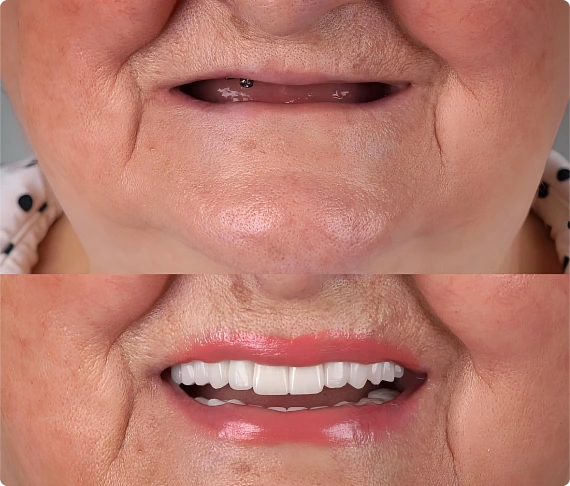table of content
- What Is a Dental Implant?
- Dental Implant Solutions
- preparation for dental implants
- Dental Implant Surgery
- Recovery After Dental Implant Procedures
- Candidates
- Benefits
- Cost of Dental Implants
- What Makes Us Different?
lorem ipsum text blog tittle
Preparation for implants begins with a consultation with our restorative dentist, Dr. Nesiba, to determine if this is a suitable treatment option. During the appointment, he evaluates the patient’s dental health and the space available for implants through a 3D CT scan or panoramic X-ray. These imaging techniques allow detailed assessment of the jawbones to determine bone quality at the implant site.
The next phase is collaborative treatment planning. Using the 3D images, Dr. Nesiba identifies the exact implant locations, types, and sizes for the best functional and aesthetic outcome. Additional aspects of preparation may involve:
- Tooth extractions - removal of severely damaged teeth.
- Bone grafting - adding tissue to the jawbone to provide adequate bone support at the target sites before dental implant placement.
- Sinus lifts - raising the maxillary sinus floor (large, air-filled cavity within the cheekbones) to create additional space for bone graft material.
- Temporary restoration - Dr. Nesiba may create a temporary denture or bridge to fill the space while the implant integrates with the bone.
Preparation for implants begins with a consultation with our restorative dentist, Dr. Nesiba, to determine if this is a suitable treatment option. During the appointment, he evaluates the patient’s dental health and the space available for implants through a 3D CT scan or panoramic X-ray. These imaging techniques allow detailed assessment of the jawbones to determine bone quality at the implant site.
The next phase is collaborative treatment planning. Using the 3D images, Dr. Nesiba identifies the exact implant locations, types, and sizes for the best functional and aesthetic outcome. Additional aspects of preparation may involve:
lorem ipsum text
- Tooth extractions - removal of severely damaged teeth.
- Bone grafting - adding tissue to the jawbone to provide adequate bone support at the target sites before dental implant placement.
- Sinus lifts - raising the maxillary sinus floor (large, air-filled cavity within the cheekbones) to create additional space for bone graft material.
- Temporary restoration - Dr. Nesiba may create a temporary denture or bridge to fill the space while the implant integrates with the bone.
lorem ipsum text
The next phase is collaborative treatment planning. Using the 3D images, Dr. Nesiba identifies the exact implant locations, types, and sizes for the best functional and aesthetic outcome. Additional aspects of preparation may involve:
- Tooth extractions - removal of severely damaged teeth.
- Bone grafting - adding tissue to the jawbone to provide adequate bone support at the target sites before dental implant placement.
- Sinus lifts - raising the maxillary sinus floor (large, air-filled cavity within the cheekbones) to create additional space for bone graft material.
- Temporary restoration - Dr. Nesiba may create a temporary denture or bridge to fill the space while the implant integrates with the bone.
conclusion
Preparation for implants begins with a consultation with our restorative dentist, Dr. Nesiba, to determine if this is a suitable treatment option. During the appointment, he evaluates the patient’s dental health and the space available for implants through a 3D CT scan or panoramic X-ray. These imaging techniques allow detailed assessment of the jawbones to determine bone quality at the implant site.
The next phase is collaborative treatment planning. Using the 3D images, Dr. Nesiba identifies the exact implant locations, types, and sizes for the best functional and aesthetic outcome. Additional aspects of preparation may involve:
- Tooth extractions - removal of severely damaged teeth.
- Bone grafting - adding tissue to the jawbone to provide adequate bone support at the target sites before dental implant placement.
- Sinus lifts - raising the maxillary sinus floor (large, air-filled cavity within the cheekbones) to create additional space for bone graft material.
- Temporary restoration - Dr. Nesiba may create a temporary denture or bridge to fill the space while the implant integrates with the bone.
BY: Dr. John Nesiba
February 20, 2025
Discover Oral Solutions
Our caring, Board-Certified Oral Surgeon has helped thousands of patients achieve better dental health, ensuring a comfortable and supportive experience every step of the way.


